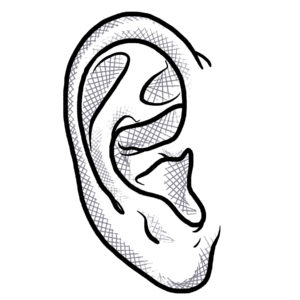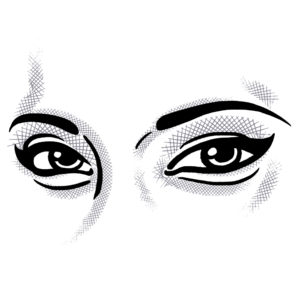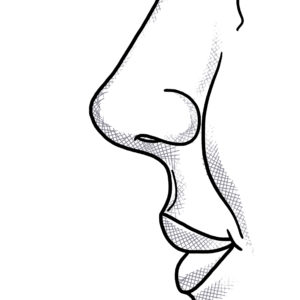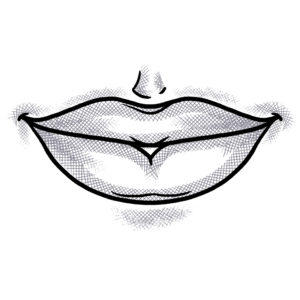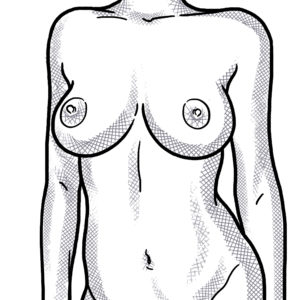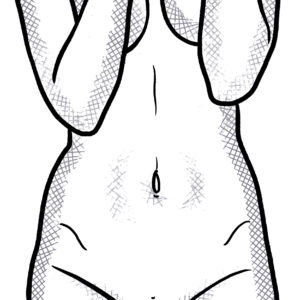Dermal Anchor Implant
They are often referred to as “implants”, or as one my clients describes them: “Those things that you staple under the skin.”
But what does this involve? What are the facts?
All of the terms used for this form of piercing are referring to the same thing. Technically it is known as single-point-piercing, which simply means that it has one entry point, and not two as in regular piercings. In the process a pocket of skin forms in which the jewelry then takes root.
It is important to understand that a dermal anchor never really grows into the flesh, because the top portion remains above the skin. This means that air and liquid can circulate. (You can find more information on the page dedicated to single-point-piercings)
Origins:
Dermal anchors are still relatively new. Since their introduction in the middle of 2006, the popularity of microdermals has skyrocketed. Initially, jewelry similar to nose studs were used. A loop under the skin was intended to help it grow in and stay in place. However, experience showed that specially designed implants provided better results.
Currently, there are a number of different implants that we can use, allowing us to place it on almost any part of the body. Depending on the area of the skin, and the depth of the piercing, we select the most suitable implant.
Placement and Motifs: A dermal anchor implant below the navel and a navel piercing with a heart-shaped pendant.
A dermal anchor can be placed on almost any part of the body. Because there is a large selection of lower plates, an experienced professional can choose the one best suited to the area.
Frequently, dermal anchors are placed around the eyes, on the nape of the neck, on the suprasternal notch, as well as in the décolleté area or the navel. You will also find dermals on the hand, the arms, or on the legs.
There are many motifs available for back piercings, e.g. stars or crosses.
Dermal anchors are also worn by women in the genital area or on the pubic bone.
Tattoos always offer a good opportunity to use a dermal anchor as an added adornment.
Healing and Care:
- Wash your hands before touching the piercing and disinfect your hands afterward.
- Spray on ProntoLind Spray and leave it on for 30 seconds. Then wipe it clean with a smooth tissue (paper towel or kleenex, no cotton balls!)
- Apply ProntoLind Gel and let it absorb. Then carefully begin to move the piercing backwards and forwards (don’t twist).
Implants and surface piercings should not be moved.
Note:
The single-point-piercing should be touched as little as possible (wash and disinfect your hands if doing so), and exposed to as little irritation as possible. Do not remove or twist the piercing when cleaning, since this can further damage the wound canal. Use ProntoLind-Spray and ProntoLind-Gel twice a day for the first 2-3 weeks, then once a day for another 3 weeks.
Healing Process For All Single-Point-Piercings:
- Depending on the area, the initial healing of a surface piercing can take anywhere between 3 – 12 weeks, and up to 12 months for a complete recovery. A swelling of the lymph nodes in the first few weeks is completely normal.
- At the beginning, make sure you have a professional piercer switch your jewelry to another size of ball, bar, or ring.
- Never tape the piercing wound shut. Also avoid “wound” ointments, alcohol or chlorine-based disinfectants, hydrogen peroxide, and essential oils.
- Saunas, sunbeds, steam baths, and any kind of swimming in pools should be avoided for two weeks. Exposure to sea water is allowed after 7 days.
- Do not color or dye your hair for the first 6 weeks; use caution when combing your hair or visiting the hairdresser/barber.
- It is normal for there to be a wound secretion around the pierced area (initially clear, then yellowish-brown, not to be confused with pus) and for it to become sebaceous. This is part of the healing process, and can be removed with ProntoLind Spray, or when showering.
- A slight reddening and swelling of the skin and light post-treatment bleeding are normal in the first 10 days.
- When engaging in everyday tasks such as dressing, undressing, eating, shaving, applying cream, showering, washing, opening and closing cupboards, be careful that the piercing does not get caught in something and tear.
- Avoid lying down for too long or exerting undue pressure on the pierced area, as this can cause damage.
- If you see the piercing growing in a “crooked” direction, you can lightly twist it in the opposite direction and hold it there a few seconds in order to set it straight again.
Jewelry:
The implant is inserted into the skin tissue and will remain there. The implant itself cannot be changed because it is inside the skin, and is about 1.5mm large. However, you can replace the upper attachments of the implant with pieces of different sizes: 2.5mm, 3mm, 5mm, and even 6mm. There are rounded discs with rhinestones in all colors and other motifs such as stars.
The upper attachments are also available in gold. Indeed new designs are coming out almost weekly.
The dermal anchor is more popular than ever, and is no longer considered something “dangerous”.
Something to consider: A dermal anchor together with a flower-shaped tattoo, with a colored and white anchor disc.
Dermal anchors require a clean, precise, and sterilized process.
If the implant is not placed in the right position, and above all not deep enough inside the tissue, there is a big risk of it growing back out. If it does begin to grow out, then there is a danger that it can snag on something, so it is better to remove it completely before it is accidentally torn out. Some areas, like the back of the hand or the knuckles or ankles, are not suited to dermal anchors, simply because they cannot be inserted deeply enough to be secure.
Unlike piercings, you cannot remove piercings yourself.
Moreover, for the first 6 months you should avoid excessive movement, so that the implant can anchor itself securely in the tissue.
A dermal anchor can also serve to embellish a tattoo. In short, you can be as creative as you wish.
Piercing Wiki
Auf der Suche nach Informationen zu Themen rund um Piercings, Piercing Materialien und diverse Piercing Arten? Unser Piercing-Wikipedia wird ständig überarbeitet um immer die aktuellsten Infos zu geben.
Marc
und Piercer
Reserviere online einen Termin für dein Wunschpiercing bei uns.
Über 40.000 qualitativ hochwertige Piercings und Werkzeuge zur Auswahl.

